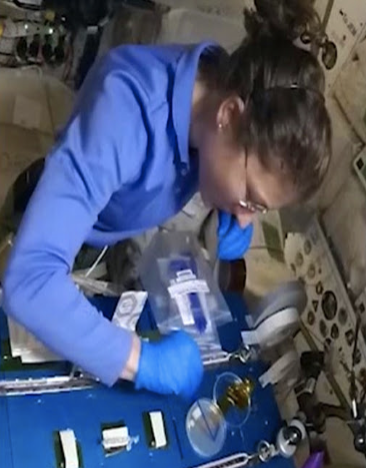Report by Ananya Singh
SS, July 5: The scientists aboard International Space Station managed to successfully edit genes in space for the first time. The experiment was performed on yeast cells where they first edited its genome, then repaired the DNA (Deoxyribonucleic Acid) and lastly sequenced it. This was done using CRISPR technology. CRISPR focuses on double-strand breaks in the DNA which is the most harmful type of DNA damage because of its ability to kill cells. Scientists can now study the repair mechanisms in more detail by using this technology.
Why is it needed: Astronauts are exposed to the harmful radiations in space. This causes cell damage that can lead to the development of life-threatening diseases like cancer. As this study helps in understanding DNA repair mechanisms, further research could pave the way for finding ways to shield astronauts from these harmful radiations and make Deep Space Exploration possible.
CRISPR is a powerful cut and paste tool for DNA editing. It stands for Clustered Regular Interspaced Short Palindromic Repeats. It consists of 2 components
1. Cas 9 protein – to cut the DNA, and 2. Guide RNA – to recognize the sequence of DNA to be edited.
How does it work-
1. Scientist identify the DNA sequence that needs to be edited.
2. A specific Guide RNA is synthesized to identify the intended DNA sequence
3. It is then introduced in the cell. The Guide RNA identifies the sequence and cuts it with the help of Cas 9 protein.
4. Scientists can modify, edit, or delete that part of the sequence to achieve the desired result.
Genes- a unit of heredity passed on from a parent to their child.
Genome- Complete set of genes present in a cell.
DNA- material present in all living things which carries genetic information.


